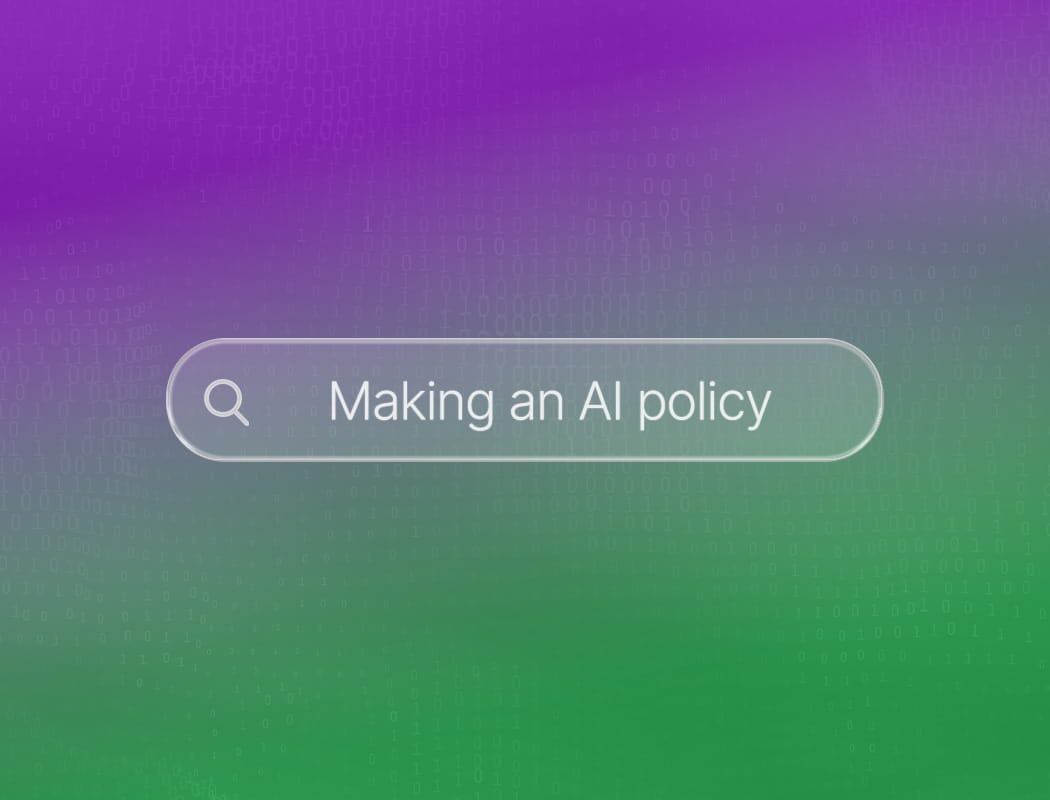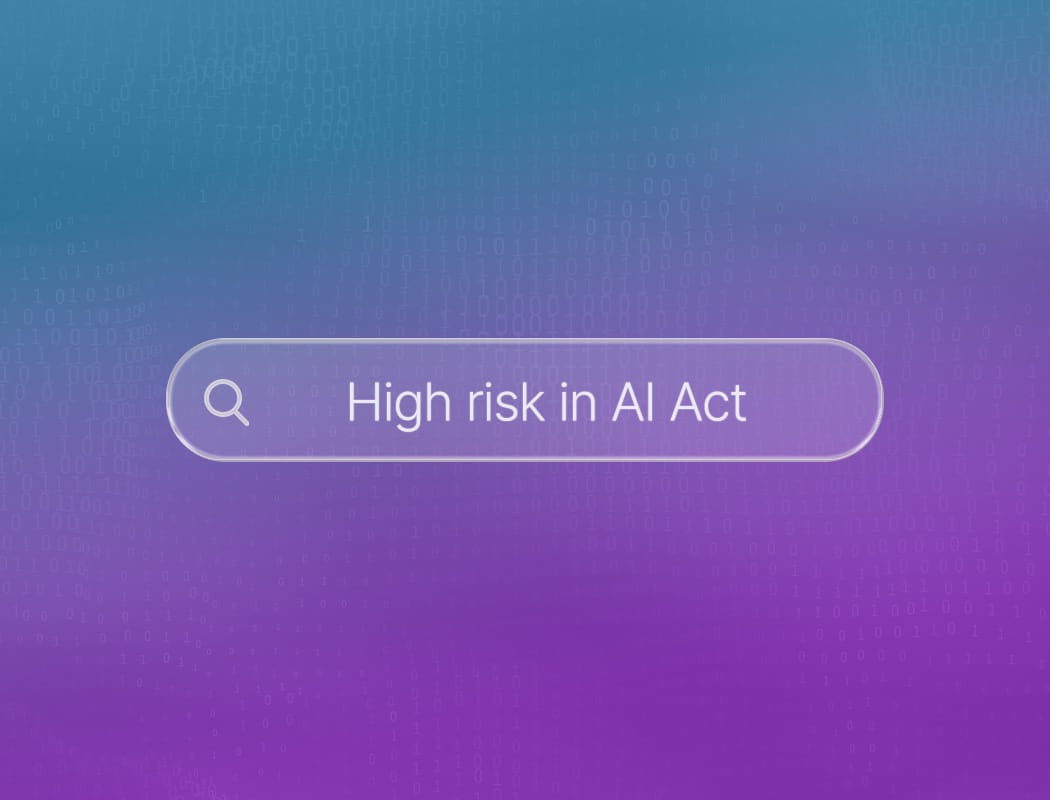How to create an AI policy?
Creating an AI policy is a bit like drawing the map before you set out on a journey. You want to know where you’re going, what you’ll need along the way, and how to avoid getting lost.
Whether your team is large or small, having a clear policy helps prevent confusion and keeps your organization moving in the right direction. Let’s break down the process into two main steps so you can get started with confidence.
Assess your needs and risks
Before you put pen to paper, take a close look at how your organization uses AI. Are you using chatbots for customer service? Do you analyze data to spot trends? Make a list of every touchpoint where AI comes into play.
Next, think about the risks. Could sensitive information be exposed? Might decisions made by AI affect people’s lives or jobs? This is the time to talk to your team, gather feedback, and identify any concern.
Draft, review, and communicate your policy
Now it’s time to write your AI policy. Keep it simple and clear. Outline what’s allowed, what’s not, and who’s responsible for monitoring AI use. Don’t forget to include guidelines for transparency and accountability.
Once you have a draft, share it with stakeholders for feedback. Make revisions as needed, then roll out the policy to your whole team. Training sessions and regular updates will help keep everyone on the same page.
With thoughtful AI policy creation, you set your organization up for safe and successful AI adoption.
What are the key components of an AI policy?
The process of AI policy creation brings together people from different departments to agree on how AI should be used, what risks need to be managed, and how to keep things fair and transparent.
A well-designed policy helps organizations avoid surprises and stay ahead of new challenges as technology evolves. Let’s take a look at the key components of an AI policy.
1. Purpose and scope
Every AI policy starts with a clear purpose and scope. This section explains why the policy exists and who it applies to. It sets the tone for everything that follows.
For example, does the policy cover only internal projects, or does it also apply to vendors and partners? Is it focused on data privacy, ethical use, or both?
By defining these boundaries early, AI policy creation becomes much more focused and effective. Everyone involved knows exactly what is expected and where their responsibilities begin and end.
2. Ethical guidelines and risk management
The heart of any AI policy lies in its ethical guidelines and approach to risk management. Here, organizations spell out what they consider examples of responsible AI. This might include commitments to avoid bias, respect user privacy, and ensure transparency in decision-making.
Risk management strategies are also detailed, outlining how to identify, assess, and respond to potential problems. This part of the policy is where values meet practical action, guiding teams through tricky situations and helping them make the right choices.
3. Governance and accountability
No AI policy is complete without strong governance and clear lines of accountability. This section describes who is responsible for enforcing the policy and how compliance will be monitored. It might introduce committees, regular audits, or reporting structures.
Here AI governance ensures that the policy is not just a document but a living framework that adapts as AI technology changes. Accountability means everyone knows their role in keeping AI use safe, fair, and aligned with the organization’s goals.
How does an AI policy benefit an organization?
An AI policy is more than just a set of rules. It’s a living document that guides how an organization uses artificial intelligence, both now and in the future.
With AI moving fast, having a clear policy helps everyone stay on the same page. It sets expectations, reduces risk, and builds trust with customers and employees alike.
But what does this look like in practice? Let’s explore three key ways an AI policy benefits an organization.
Clear guidelines for responsible use
A well-crafted AI policy spells out exactly how AI should be used within your organization. This means no more guessing about what’s allowed and what isn’t.
Employees know where the boundaries are, which tools they can use, and know about the ethical guidelines of AI. The policy can address issues like bias, transparency, and accountability, making sure everyone understands their responsibilities.
When people have clear instructions, they’re less likely to make mistakes or take shortcuts that could lead to trouble. This clarity also makes it easier to onboard new team members, since they have a roadmap for working with AI from day one.
Reducing legal and ethical risks
AI comes with its own set of risks, from AI data leaks to potential discrimination. An AI policy helps organizations spot these risks early and put safeguards in place.
For example, the policy might require regular audits of AI systems to check for bias or errors. It could also outline steps for reporting problems or handling complaints.
By being proactive, organizations can avoid costly lawsuits, regulatory fines, or damage to their reputation. A strong policy shows regulators and the public that you take AI seriously and are committed to using it responsibly. This can be a big advantage in industries where trust is everything.
Building trust with stakeholders
Trust is hard to earn and easy to lose, especially when it comes to new technology. An AI policy gives customers, partners, and employees confidence that your organization is thinking ahead. It shows that you’re not just chasing the latest trends, but actually considering the impact of your choices.
When people see that you have clear rules and stick to them, they’re more likely to do business with you or recommend you to others. Internally, a policy can spark important conversations about values and priorities, helping to create a culture where everyone feels heard and respected.





